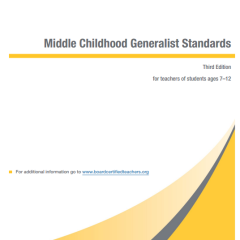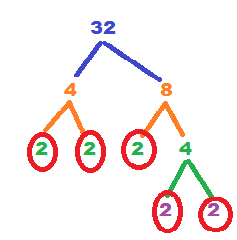 In 1999 I was a relatively young National Board candidate. There were about 30 of us going through the process in our state, aspiring to join the seven or so Washington State NBCTs. Someone sponsored a reception in Seattle and then-governor Gary Locke was the featured speaker. While explaining his proposed 15% NBCT bonus, he remarked that someone in the Legislature asked him, “What if all of these candidates pass? How will we afford those bonuses?”
In 1999 I was a relatively young National Board candidate. There were about 30 of us going through the process in our state, aspiring to join the seven or so Washington State NBCTs. Someone sponsored a reception in Seattle and then-governor Gary Locke was the featured speaker. While explaining his proposed 15% NBCT bonus, he remarked that someone in the Legislature asked him, “What if all of these candidates pass? How will we afford those bonuses?”
To which he replied, “What a wonderful problem to have.”
Well, here we are, seventeen years later, and it’s still a wonderful problem to have. The 15% bonus never really caught fire, but we do get an annual $5150, double for those who teach in high-needs schools. The wonderful problem, of course, is that there’s so many of us. Those seven NBCTs have swelled to over eight thousand, which is wonderful, but the price tag for those bonuses has swelled to over $50 million, which is kind of a problem.
To solve this wonderful problem we’ve decided to have our third NBCT Policy Summit, an event which brings NBCTs together, along with stakeholders from the Legislature and various state boards. It’s scheduled for November 19th in SeaTac.
Why a Policy Summit and why now? Three reasons:
First of all, you’re probably aware that Washington’s education funding situation is a work in progress. If our students are lucky, this could be the year when our legislature finally figures out how to provide an equitable way to fund all schools. But that’s going to involve a close look by those people at everything we spend on education in this state. Including the National Board bonus, which has become a serious amount of money.
Furthermore, that amount has hit something of a false plateau. That’s because the NatIonal Board revised its assessment process two years ago, so there’s been virtually no new NBCTs for the past two years and won’t be for another year, when candidates are finally able complete the whole process. However, we’ve got over 2,000 candidates in the pipeline and if most of them certify and a lot of them teach in high-needs schools, that $50 million could nearly double, resulting in some serious sticker-shock.
Finally, ProTeach, the default second-tier certification in our state, has been taking some heat of late. Teachers who have gone through it seem to have a dim view of the whole process, to the point where representatives at the most recent WEA RA voted to have the union look into getting rid of ProTeach. That would leave National Board Certification as our only second tier certification, something it was never designed to be.
So there’s some serious problems to solve. And we need your help. By now, if you’re an NBCT in Washington you’ve receive multiple emails inviting you to the summit.
Answer one of them.
We need your help figuring out what the future of National Board certification in Washington – including the bonus – will look like.
We’ve got a wonderful problem to solve.
 It always starts with a dream. A real dream; not an aspiration or goal, but the kind you have when you sleep. One year it was a poorly-executed field trip to Manhattan (with fourth graders) and another year I had a class of forty but no classroom. I was expected to teach them out on the lawn.
It always starts with a dream. A real dream; not an aspiration or goal, but the kind you have when you sleep. One year it was a poorly-executed field trip to Manhattan (with fourth graders) and another year I had a class of forty but no classroom. I was expected to teach them out on the lawn. My youngest son recently announced he was thinking about becoming a teacher. “What are all the steps you have to go through?” he asked.
My youngest son recently announced he was thinking about becoming a teacher. “What are all the steps you have to go through?” he asked. I recently celebrated my 30th wedding anniversary, and as it happened, my wife and I attended a wedding three days later. While watching the wedding my thoughts naturally turned to the differences between a wedding and a marriage. It’s one thing to promise everything to your spouse; it’s another thing altogether to renew that promise year in and year out.
I recently celebrated my 30th wedding anniversary, and as it happened, my wife and I attended a wedding three days later. While watching the wedding my thoughts naturally turned to the differences between a wedding and a marriage. It’s one thing to promise everything to your spouse; it’s another thing altogether to renew that promise year in and year out. Wednesday was the last day of my thirty-second year teaching. Besides a flurry of part-time teenage jobs, I’ve never really done anything else and I honestly can’t imagine a different career.
Wednesday was the last day of my thirty-second year teaching. Besides a flurry of part-time teenage jobs, I’ve never really done anything else and I honestly can’t imagine a different career. By Tom White
By Tom White By Tom White
By Tom White week I had 42 students in my classroom.
week I had 42 students in my classroom. Senator Pam Roach introduced
Senator Pam Roach introduced  By Tom White
By Tom White